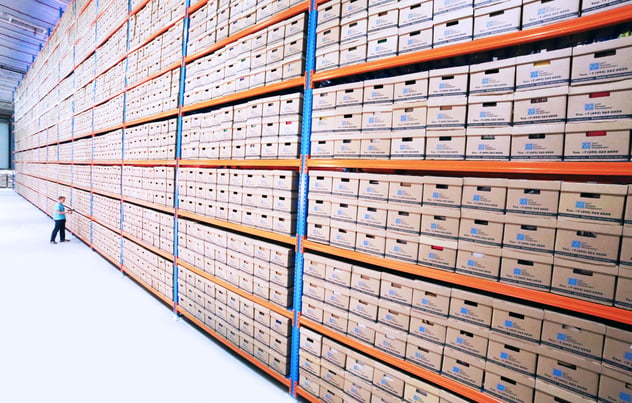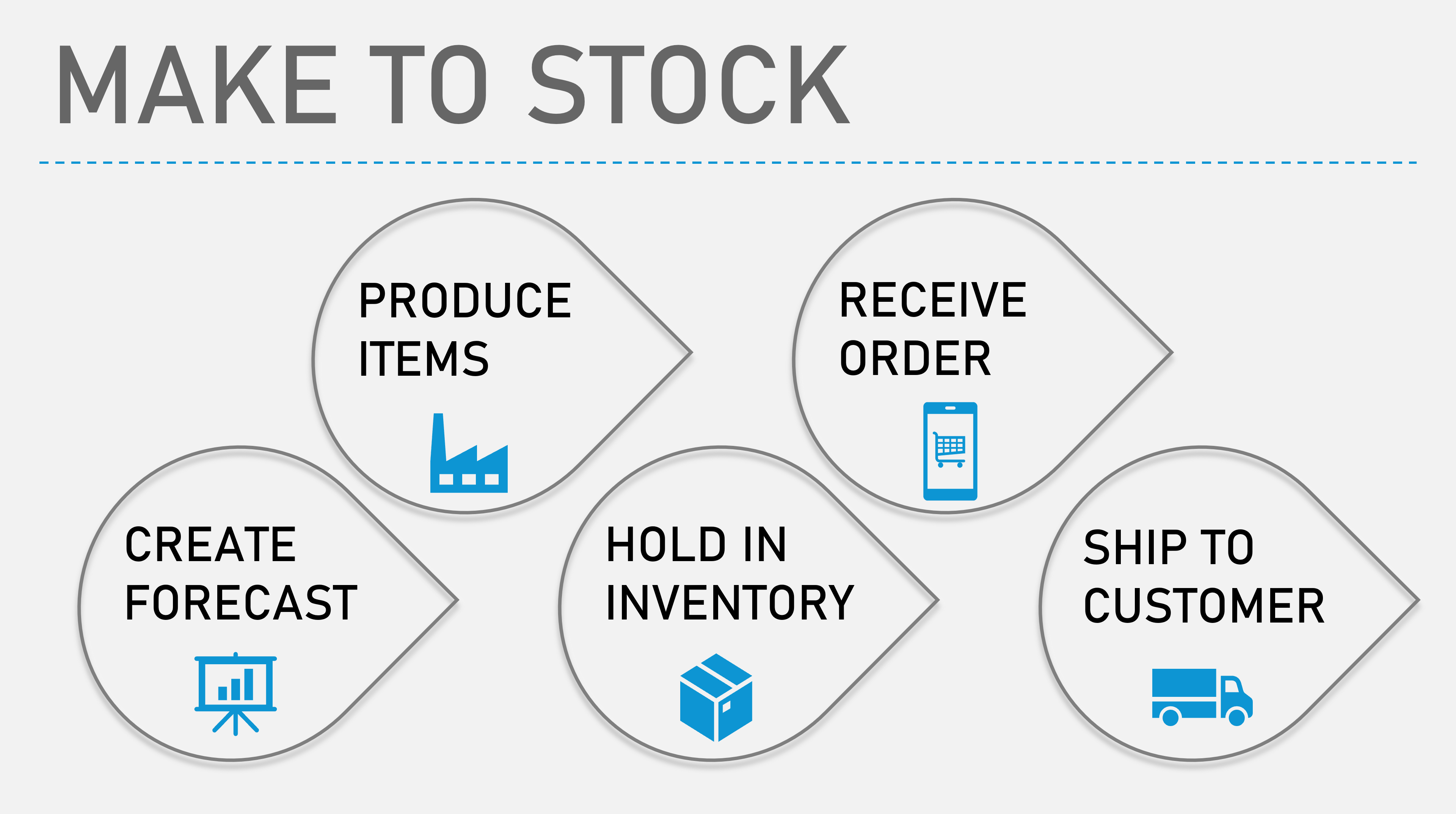There are many production strategies that can be used by manufacturing organizations looking to reduce costs and maximize their profits. In an ideal world, manufacturers would be able to know in advance how many units of each product will be sold and only produce that amount. If managed properly, they would be able to coordinate production so that they never have to hold any inventory for materials or work-in-process and they would never have any waste. However, the reality is more complicated and unpredictable. This is where production strategies such as Make-To-Stock (MTS) come into play and help manufacturers plan their production.

What is Make to Stock (MTS)?
Make to Stock (MTS) Planning is a commonly utilized production strategy that is used by manufacturing facilities that involves producing items to match anticipated consumer demand. This production strategy is not the same as producing a certain amount of goods and then trying to sell them after the fact.
The basis of Make to Stock is that the production target is determined by your demand forecast. This means that you must have an accurate demand forecast for MTS to be executed properly. Make to Stock will estimate how many orders will be generated for each product and then supplies enough stock in order to sufficiently meet those orders.
Drawbacks of Make to Stock (MTS)
Using a Make to Stock production strategy required highly accurate demand forecasts in order to properly determine the number of goods that must be produced. In theory, this method can be seen as seeing how a company can prepare itself for a varying demand.
If your forecasts are not accurate, you will end up with too much inventory, risk stock outs, or lose revenue. It is challenging to accurately predict the future when you only look at past sales data. However, there are many forecasting strategies that incorporate additional surveying and analysis components that can increase the accuracy of the forecasts.
The overall effectiveness of MTS is completely and entirely reliant on its ability to be able to predict future demand for products. This unreliability can be extremely costly for manufacturing operations. Although this is one of the most substantial drawbacks, if your production facility has a consistent demand year to year, MTS may be a beneficial option for you.
If your demand can be estimated with accuracy and precision, then the MTS strategy may be an advantageous solution for your production facility. You will be able to reduce inventory-related costs, increase profits and utilize your materials more efficiently.
Alternative to MTS - Make to Order (MTO)
For manufacturers who do not have reliable demand forecasts, it may be preferable to use a Make to Order (MTO) production strategy. In this strategy, the production of goods only starts when there is an actual demand (order) placed. This strategy prevents holding too much inventory.
As always, there is no production strategy that does not have any drawbacks. Make to Order (MTO) may only be feasible and advantageous for manufacturing operations that have relatively short production lead times or facilities that do not have large amounts of warehouse space available.
Most manufacturers will decide to use a combination of both strategies. They will use Make to Stock for items that have a reliable demand for them and Make to Order for items that don’t.
Example of Make to Stock (MTS) Planning
The following example outlines the steps that a toy manufacturer would take to use MTS within their production facility.

- Create Forecast - The first step to use Make to Stock is to estimate the demand for the products you will need to produce. There are many strategies that can be used to generate an accurate demand forecast. In this example, the manufacturer may find that they sell 40% more toys on average in the last quarter of the year.
- Produce Items - Once the forecast has been generated, manufacturers have a target quantity of goods to produce. There are many planning and scheduling steps involved in the production of items. Planners and schedulers will need to ensure that there are enough materials and resource capacity to produce the additional demand.
- Hold In Inventory - The next step is to hold the finished products in inventory while waiting for the customer orders to come in. As this is one of the most costly steps, it is preferable for manufacturers to minimize the amount of time that items are stored.
- Receive Customer Orders - When using a Make to Stock strategy, you will have products in stock when your customer orders come in. If your forecast was accurate, you should have just enough products in stock - not more or less.
- Ship To Customer - The last step is to ship the products to the customer. Because your manufacturing facility used a Make to Stock production strategy you will be able to deliver items to your customers in a timely fashion.
A software that can aid with Make to Stock (MTS) Planning is PlanetTogether’s Advanced Planning and Scheduling software (APS). PlanetTogether APS will optimize your production schedule to reduce costs, increase profits, and eliminate waste.
This software provides concurrent planning and scheduling functionalities so that you can ensure you have all of the materials you need and enough resource capacity to produce your items on time. Forecasts can also be generated and included in your production schedule so that you can produce items before customer orders are entered into your ERP system.
Advanced Planning and Scheduling (APS) Software
Advanced Planning and Scheduling Softwares have become a must for modern-day manufacturing operations as customer demand for increased product assortment, fast delivery, and downward cost pressures become prevalent. These systems help planners save time while providing greater agility in updating ever-changing priorities, production schedules, and inventory plans. APS Systems can be quickly integrated with an ERP/MRP software to fill the gaps where these systems lack planning and scheduling flexibility, accuracy, and efficiency.
With PlanetTogether APS you can:
- Create optimized schedules that balance production efficiency and delivery performance
- Maximize throughput on bottleneck resources to increase revenue
- Synchronize supply with demand to reduce inventories
- Provide company-wide visibility to resource capacity
- Enable scenario data-driven decision making
The implementation of an Advanced Planning and Scheduling (APS) Software will take your manufacturing operations to the next level of production efficiency by taking advantage of the operational data you already possess in your ERP system. APS is a step in the right direction of efficiency and lean manufacturing production enhancement. Try out a free trial or demo!
Related Lean Manufacturing Video
APS Resources